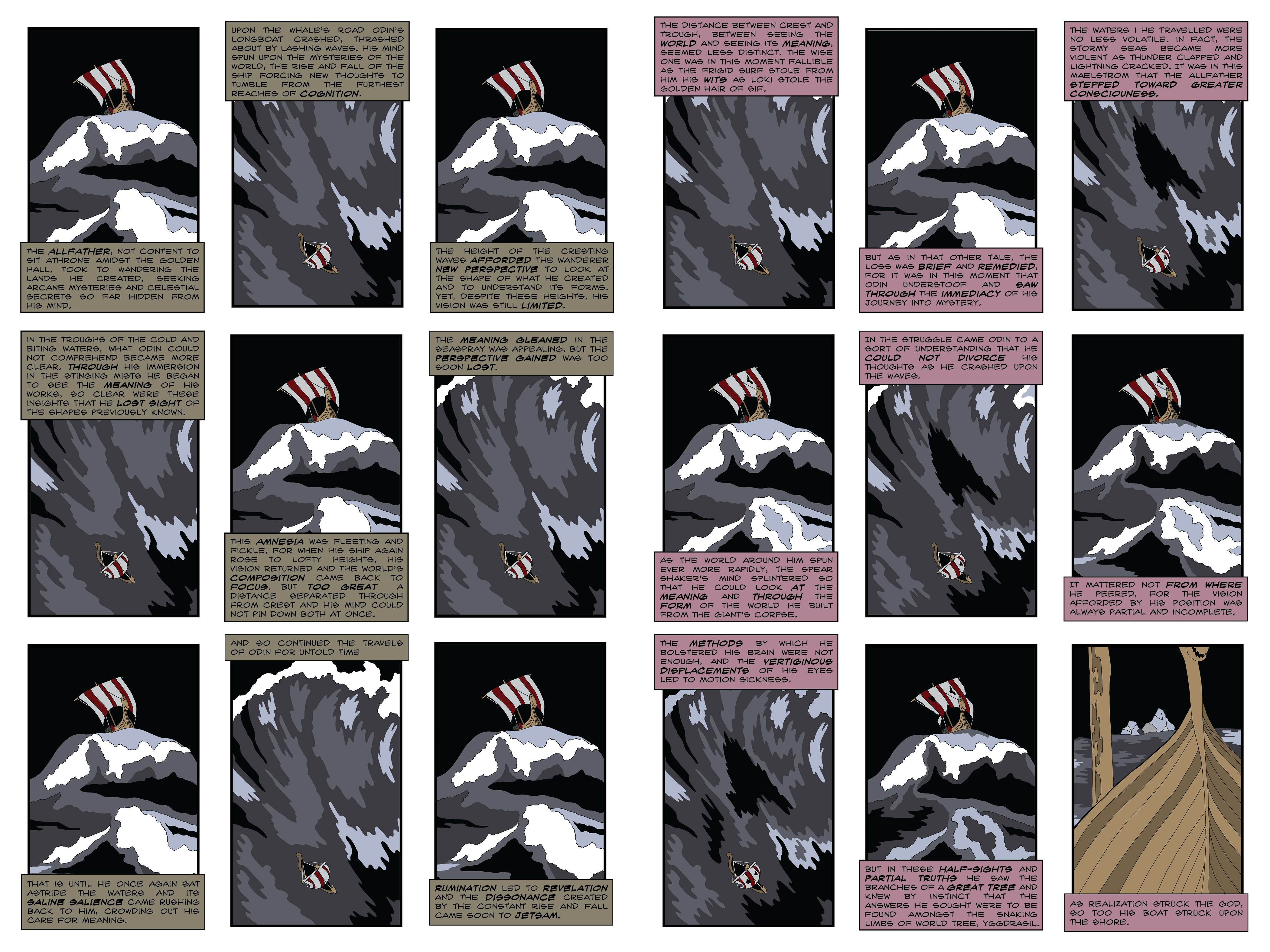I recently had the wonderful opportunity to sit down with the newly minted Dr. Nick Brown to discuss his successful dissertation defense. Dr. Brown is currently a second-year doctoral lecturer in the English Department at TCU and some of the classes he teaches include the likes of Writing Games and Paranormal Writing (a class I most definitely wish I could’ve taken in my time here at TCU).
Dr. Brown’s dissertation, titled “The Rousing of Ogma: Developing Functional Methodologies for the Production of Multimodal Scholarship,” is delivered in quite a unique way: the piece is almost entirely presented as a comic. The piece is also grounded in and explores the power of multimodal scholarship, with the term “multimodal” defined as something that is characterized by several different modes of activity or occurrence. These modes can include graphics, sound bites, etc.

“The idea of this project was to give us a way to interact with these kinds of artifacts in a way that replicated a lot of what we talk about when it comes to scholarship, but that was more natural to the comics medium,” Dr. Brown said. He mentioned how part of the difficulty of doing and/or using comics in scholarship is figuring out a way to replicate and/or cite the information that the comic is presenting. In the case of his dissertation, Dr. Brown outlines some methodologies that he hopes will make this citing and replication process easier for scholars.
He went on to share candidly about how people in the space of academia are still trying to figure out how to navigate multimodality in rhetoric and composition in the more advanced stages of higher education. “We have in rhetoric and composition the tendency to really talk about multimodality and using non-linguistic methods of communication with undergraduate students, we have a lot of support for it, but when it comes to graduate students, faculty, and staff, we have a lot less of that and it becomes something that if you want to do it, it’s encouraged, but no one knows what to do with it,” Dr. Brown said.
The timeline for the creation of Dr. Brown’s project was roughly around three years. In addition to writing and revising the script for the comics, he also had to go through the drawing, inking, coloring, and lettering process for each chapter as well: an interesting extra piece that comes with melding comics and writing scholarship. His hard work has paid off, as part of his piece has already been published in the Sequentials Journal.

In speaking further on the dissertation’s journey, Dr. Brown said he owed a lot to Dr. Jason Helms, an associate professor in English here at TCU. “Working with him he helped me to see that not only could I do a comic for my dissertation, but he would also help me navigate all the logistical things that I wasn’t thinking about,” Dr. Brown said.
One of the most interesting takeaways I gleaned from my conversation with Dr. Brown was how well the medium of comics works in the realm of writing and rhetorical practice. We talked about how most folks look at comics as another version of picture books that are easier to understand and ingest because of the images. However, Dr. Brown and others in the English Department like Dr. Helms are doing the work to showcase that comics have the ability to present as groundbreaking pieces of challenging scholarly work.
As usual, I concluded our conversation by asking what Dr. Brown wants people to take away from his creation. “I think the biggest thing for me is just recognizing that at one point we decided that words were the best way to make meaning and that isn’t something that’s natural. We have other options available to us. So, where words are good for some things, I want my work to remind people that that’s not the only option.”